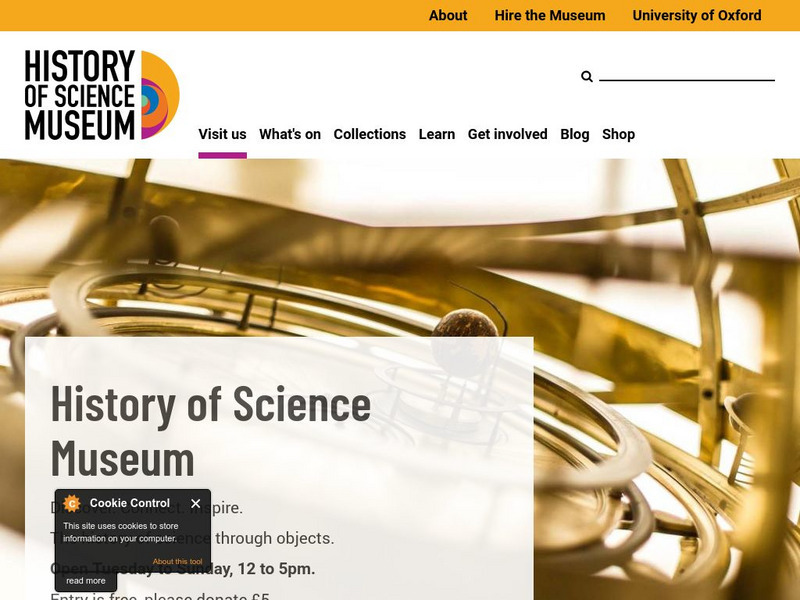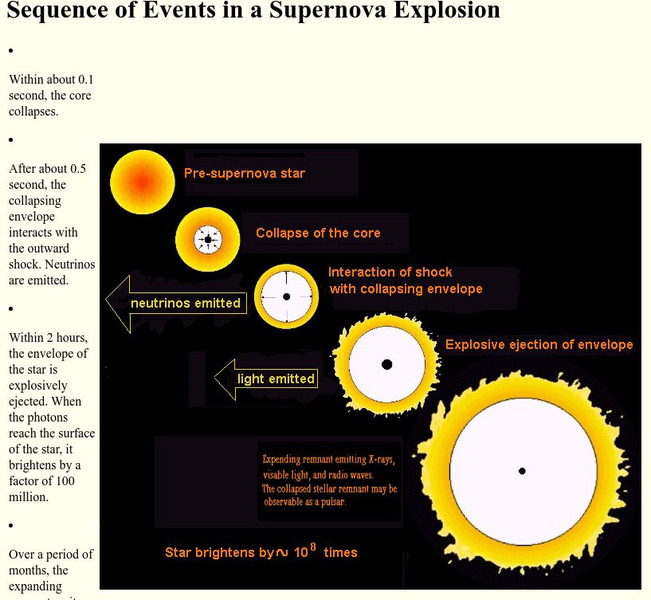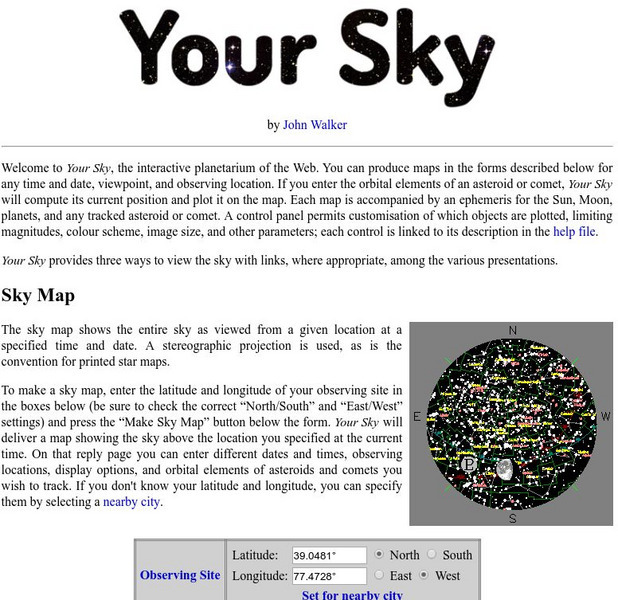Other
Astrored: Introduccion a La Astronomia
These pages offer you a range of selected resources for you to start learning from scratch Astronomy. This site has five sessions: photo gallery, lessons, interesting articles, videos and a community.
University of Oxford (UK)
Museum of the History of Science: Homepage
Home page for the Museum of the History of Science in Oxford. Includes on-line exhibits and an image bank.
Harvard University
Field Guide to X Ray Sources: Brown Dwarfs
Brown Dwarfs are explained. Includes illustrations.
Harvard University
Quasars and Active Galaxies
This site provides information about quasars and active galaxies. Includes a glossary of important terms.
Harvard University
Chandra X Ray Observatory Center: X Ray Pulsar
X-ray pulsars are explained. Features a Java applet that simulates a pulsar and allows the viewer to control the rotational speed.
Other
Hong Kong Space Museum
Besides an introduction to exhibitions and events at the museum, the site provides a guide to stargazing, an astronomy FAQ, space news, virtual tours (see site map) and research resources (including Chinese-English star and constellation...
Alabama Learning Exchange
Alex: Cosmic Measurements
In this instructional activity, students will use hands on inquiry in cooperative learning groups to understand, develop and analyze common measurements used by astronomers. Students will use common objects such as straws, twizzlers, or...
Khan Academy
Khan Academy: Angular Measure 2
Looking for an easier way to do angular measurements? This page introduces you to a trick by using skinny triangles with small angles. The skinny triangles lets the astronomer assume right triangles and then they can use trigonometry to...
Khan Academy
Khan Academy: Angular Measure 1
Do you know the size of the sun? Using angular measurement can help astronomers measure objects in the sky.
Khan Academy
Khan Academy: Angular Measure 1
Warm up questions on angular measure can be found on this site.
Concord Consortium
Concord Consortium: Stella
Students act as astronomers, studying stars in a patch of sky in our own galaxy. Using simulated data from spectroscopy and other real-world instrumentation, students learn to determine star positions, radial velocity, proper motion, and...
South Carolina Educational Television
Know It All: Solar System Simulation
Fourth graders will begin to understand the solar system by using and creating models to demonstrate the layout of the solar System.
Khan Academy
Khan Academy: Angular Measure 2
A practice to test your knowledge of angular measurement. Practice is part a unit on physical quantities and their measurements.
University of Texas at Austin
The University of Texas Mc Donald Observatory: Constellation Guide
View a selection of familiar constellations while learning about Zodiac signs and how constellations got their names.
CK-12 Foundation
Ck 12: Earth Science: Branches of Earth Science Study Guide
Review the main study areas of Earth Science.
NASA
Nasa Space Place: What Are Constellations?
A brief explanation of constellations. Discusses what determines what stars and constellations you see, the difference between astrology and astronomy, and how NASA uses the constellations.
California Institute of Technology
Cool Cosmos: Ask an Astronomer
Explore the night sky with some help from Cool Cosmos. This site provides a list of the most frequently asked questions about the things we can see at night. Click on the question link and delve into the beauty of evening.
NASA
Nasa: Kepler's Third Law
This site from NASA states Kepler's third law of motion and extends it to develop an equation for the velocity of an orbiting planet.
Cornell University
Cornell University: Astronomy: Sequence of Events in a Supernova Explosion
The complex sequence of events in a supernova explosion are explained and illustrated.
NASA
Viewing the Violent Universe: What Are Gamma Rays?
The universe produces a broad range of light, only a fraction of which is visible to our eyes. Gamma rays are nonvisible light, which also includes x-rays, ultraviolet light, infrared radiation, and radio waves.
Fourmilab Switzerland
John Walker: Your Sky
You can produce sky maps for any date and time, viewpoint or observing location. See your sky map, horizon view, or track an asteroid or comet on this highly interactive site.
NASA
Electromagnetic Spectrum: Ultraviolet Waves
Ultraviolet (UV) light has shorter wavelengths than visible light. Though these waves are invisible to the human eye, some insects can see them. The specific wavelength values are given. Uses and applications of these waves are explained.
Cosmo Learning
Cosmo Learning: Astrobiology and Space Exploration
A collection of video lectures from several guest speakers about issues of astrobiology and space exploration at Stanford University. The lectures cover topics like Martian meteorites, planetary system, life in space, and satellites....
Cosmo Learning
Cosmo Learning: Modern Physics: Cosmology
A collection of video lectures from a cosmology course taught at Stanford University. The course gives an overview of the universe as a whole while focusing on astrophysics, physics, and astronomy in eight lectures. Lectures vary in length.















